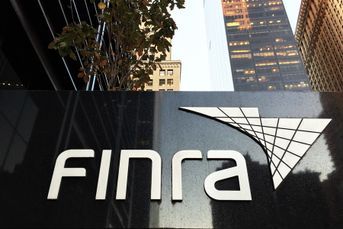Financial advisers debate the best way to charge clients

A new generation of advisers is critiquing traditional AUM fees and advocating for alternatives.
Few topics can evoke passionate debate among financial advisers quite like the question of how they bill clients.
While asset-based advisory fees continue to push commissions into the background, a new generation of financial planners has joined some veteran industry analysts in critiquing the assets-under-management model and advocating for alternatives.
As part of the Institute for the Fiduciary Standard’s annual Fiduciary September event, InvestmentNews senior columnist Jeff Benjamin hosted a debate among financial advisers with three different business models.
In one corner was Adam Cross, a financial adviser with AMC Wealth Management who charges an AUM fee for clients who want him to manage investments and flat fees for those who just want financial advice. Instead of hampering his ability to be a true fiduciary for his clients, embracing multiple business models allows him to serve investors in the way they prefer, he said.
“Instead of me pushing one [fee structure], all I have to do is ask one or two questions and map the clients to the most appropriate service option,” Cross said. “If you aren’t a one-trick pony, you eliminate conflicts.”
In another corner was Alex Offerman, co-founder of financial planning firm Model Wealth, who argued that his firm’s approach of charging an hourly fee for financial planning projects is the least conflicted business model. However, he said that while other fee structures can open advisers to more conflicts of interest, advisers can act as a fiduciary if fees are properly disclosed in both dollar amounts and as a percentage of the client’s portfolio.
Rounding out the conversation was Cody Garrett of Measure Twice Financial, one of a growing number of advice-only planners who charges a flat fee to provide a variety of services to mostly do-it-yourself investors. Garrett made a distinction between the legal definition of a fiduciary and the spirit of the word, arguing that charging an AUM fee puts advisers into the former category while his model removes any potential for a conflict of interest.
“By becoming a one-trick pony, you become a no-trick in terms of not tricking your clients,” he said.
The diversity of business models is a testament to the value of being an independent adviser, Garrett said. His clients want to manage their own investments and tend to be skeptical of financial advisers, so charging for individual planning projects makes the most sense for them.
“We each serve different people differently. We’re not forced to be under one compensation model,” Garrett said. “To give advice in someone’s best interest, you have to first understand their interests, and financial planning has to precede any type of [product] implementation.”
However, many investors do want their hands held when it comes to managing their finances, Cody said, and he asked how a fee-for-service model determines what is appropriate for them. Charging 1% is a standard rate that many investors understand and can support for ongoing investment management, he said.
A webinar participant, Chip Addis, a financial adviser with Addis Hill Inc., argued that the AUM model also has some advantages over other models. For example, by charging for the implementation and management of the investments, the firm is incentivized to ensure it’s done correctly. It allows the firm to develop a longer-term relationship with clients than some of these one-off service models, he said.
“If we’re not managing those assets, it’s very difficult to make sure that the recommendations you make to the client actually get done,” Addis said.
Cross and Garrett also acknowledged some challenges that come along with their chosen fee models. It can be difficult for a firm to implement hourly fees and ensure that advisers are keeping accurate track of how they use their time, Cross said. Some clients can also resist the idea of paying for a short conversation with their adviser.
But as advisers increasingly offer financial planning services beyond traditional investment management — such as charitable giving, employee benefits, tax planning and Social Security analysis — advisers need to evolve how they charge, Garrett said. AUM fees can only be used for investment management but don’t make sense for the rest of the financial planning spectrum.
“You’re always going to have people say, ‘Do it for me,’ and other people who say, ‘I’ll do it myself,’” Garrett said. “A flat fee can include investment management.”
[Read more: Advice-only fees gain traction as advisers opt out of managing client portfolios]
‘IN the Nasdaq’ with John McDonough, head of US wealth management intermediaries distribution at Invesco
Learn more about reprints and licensing for this article.








